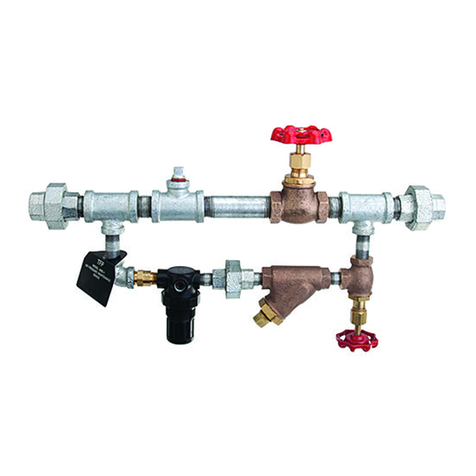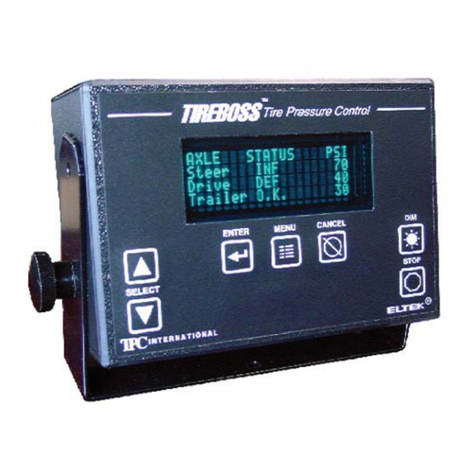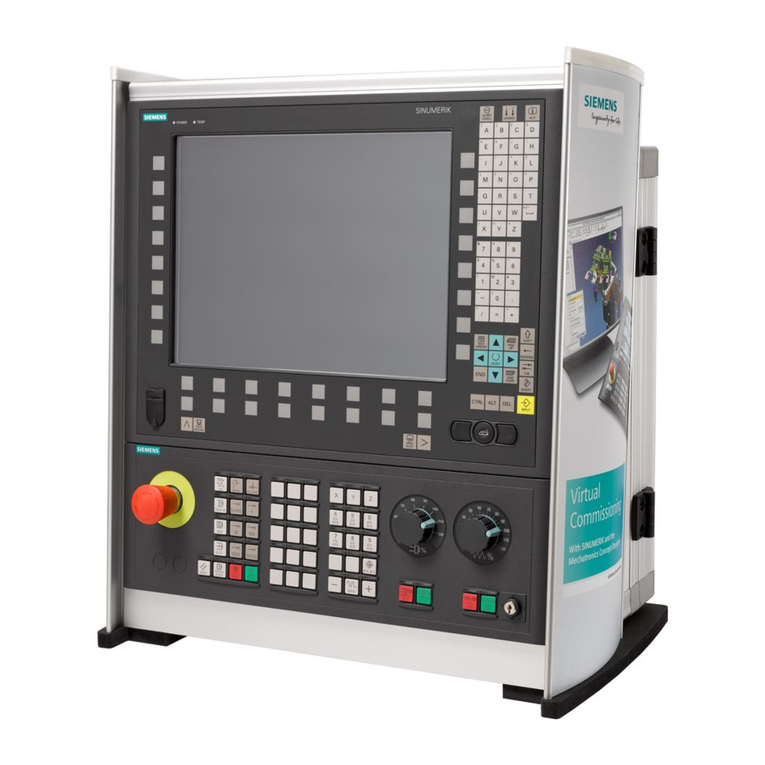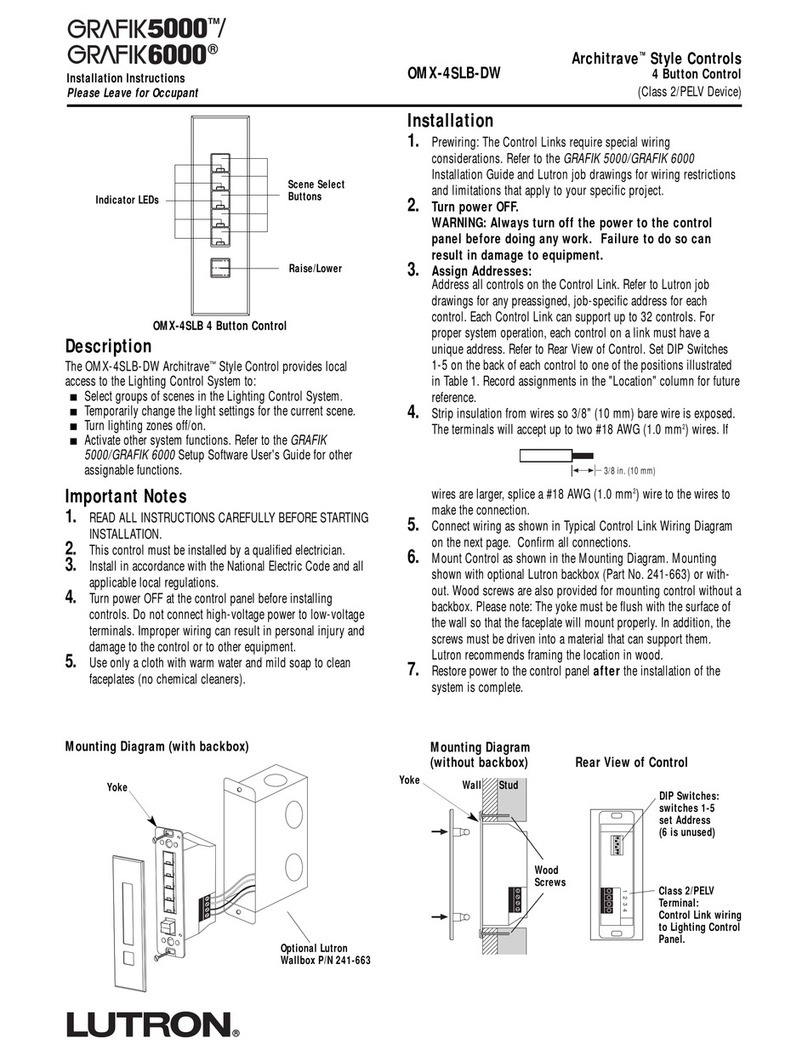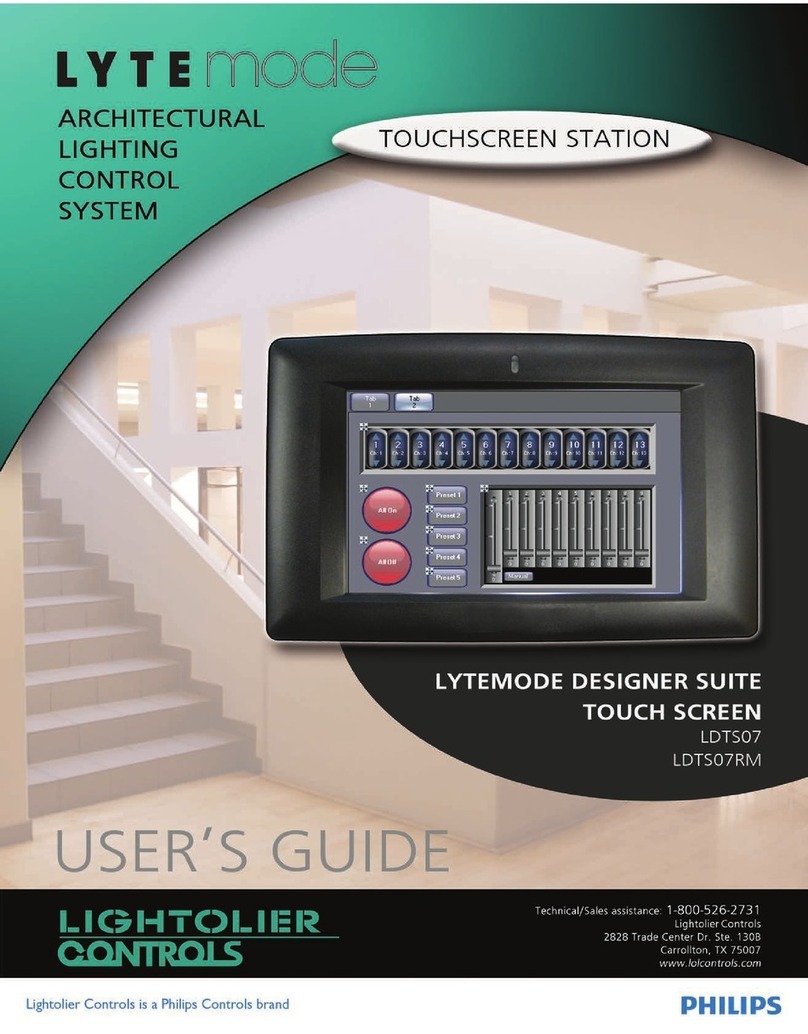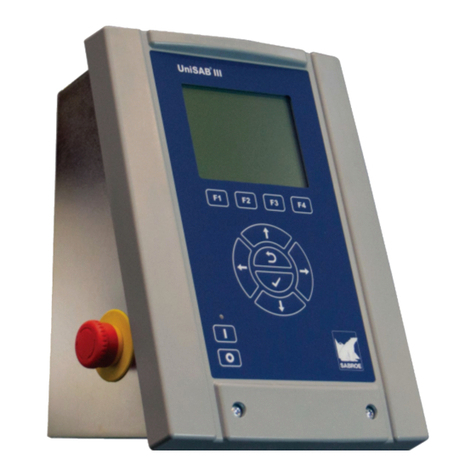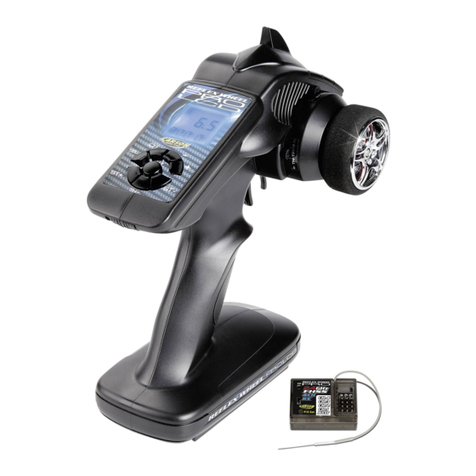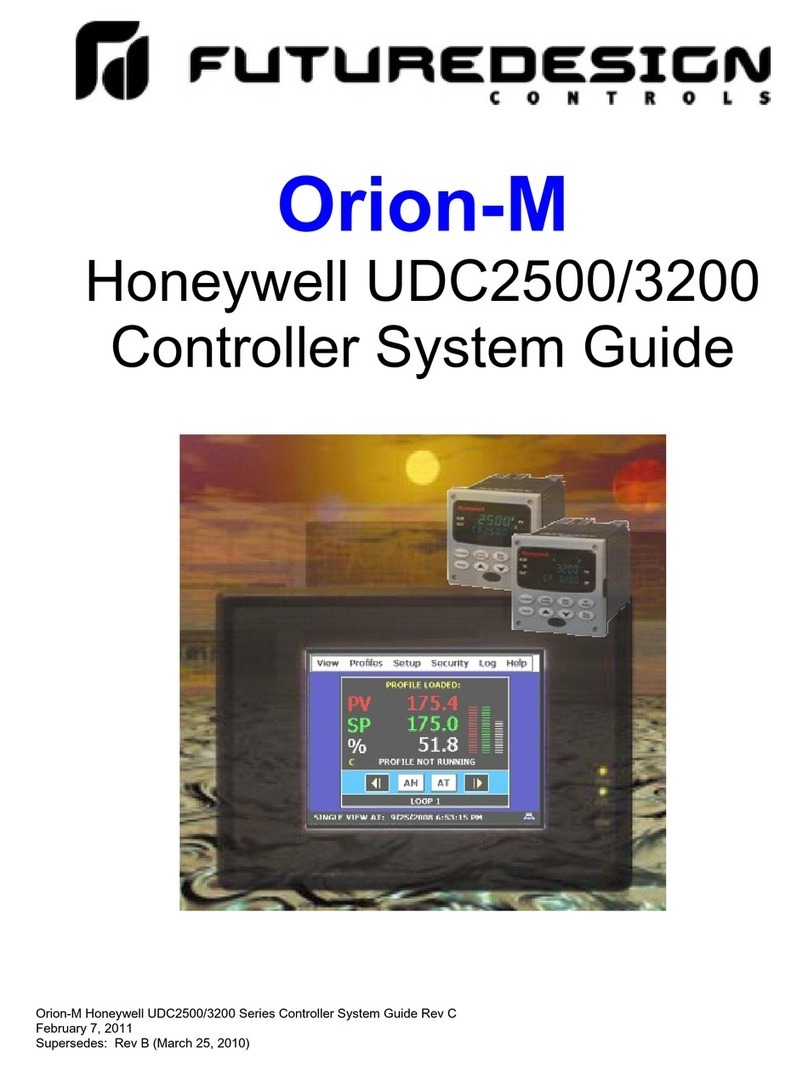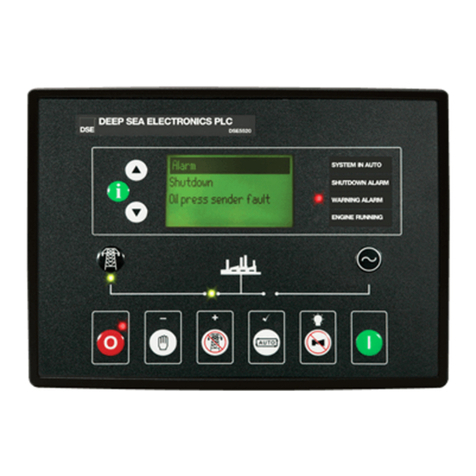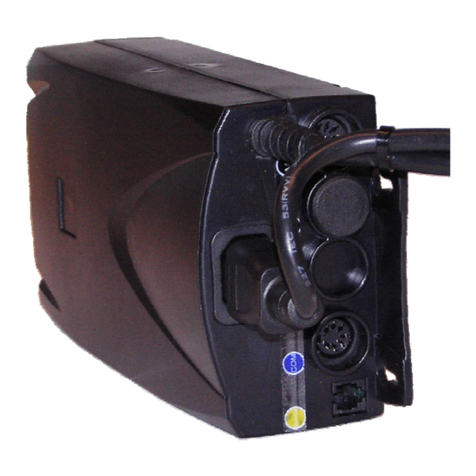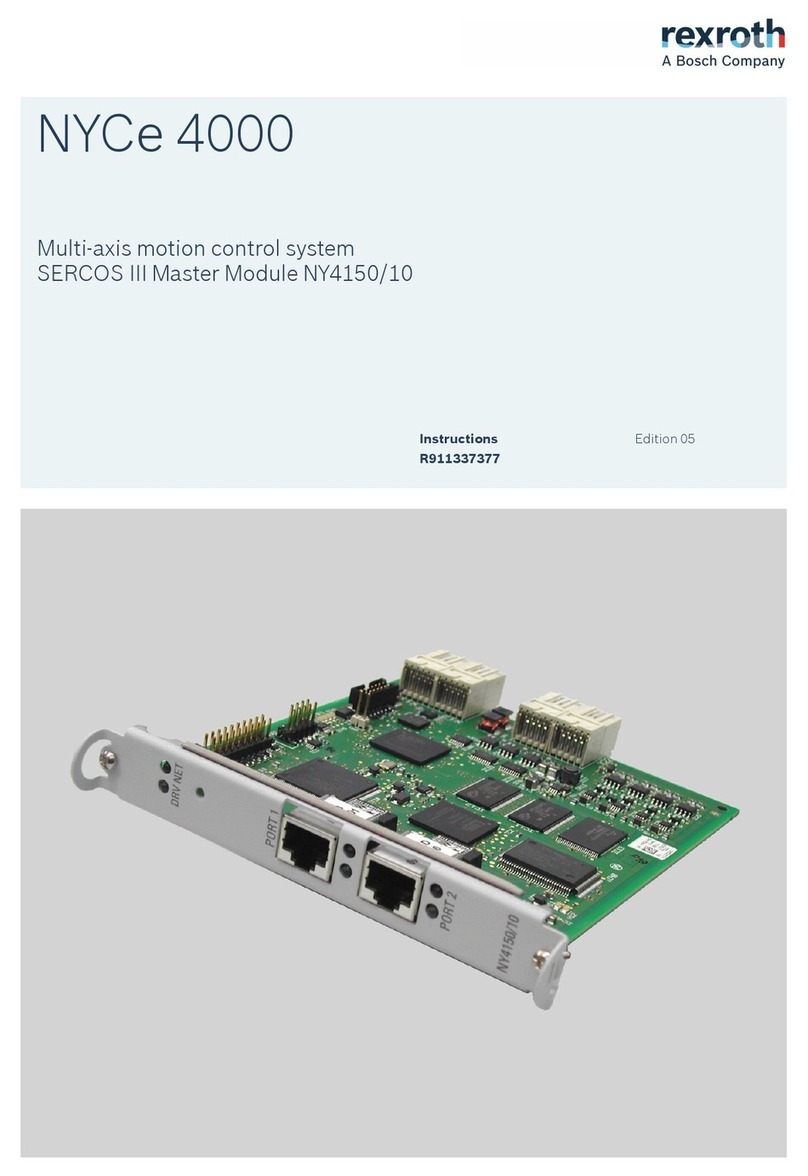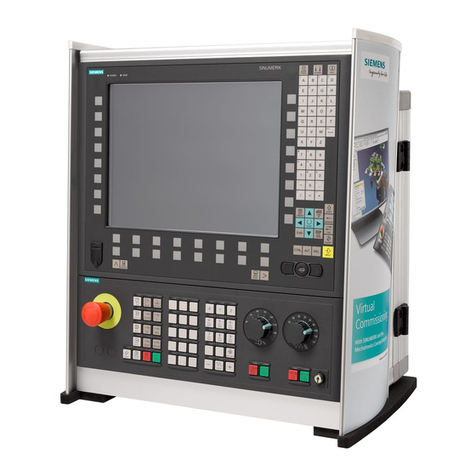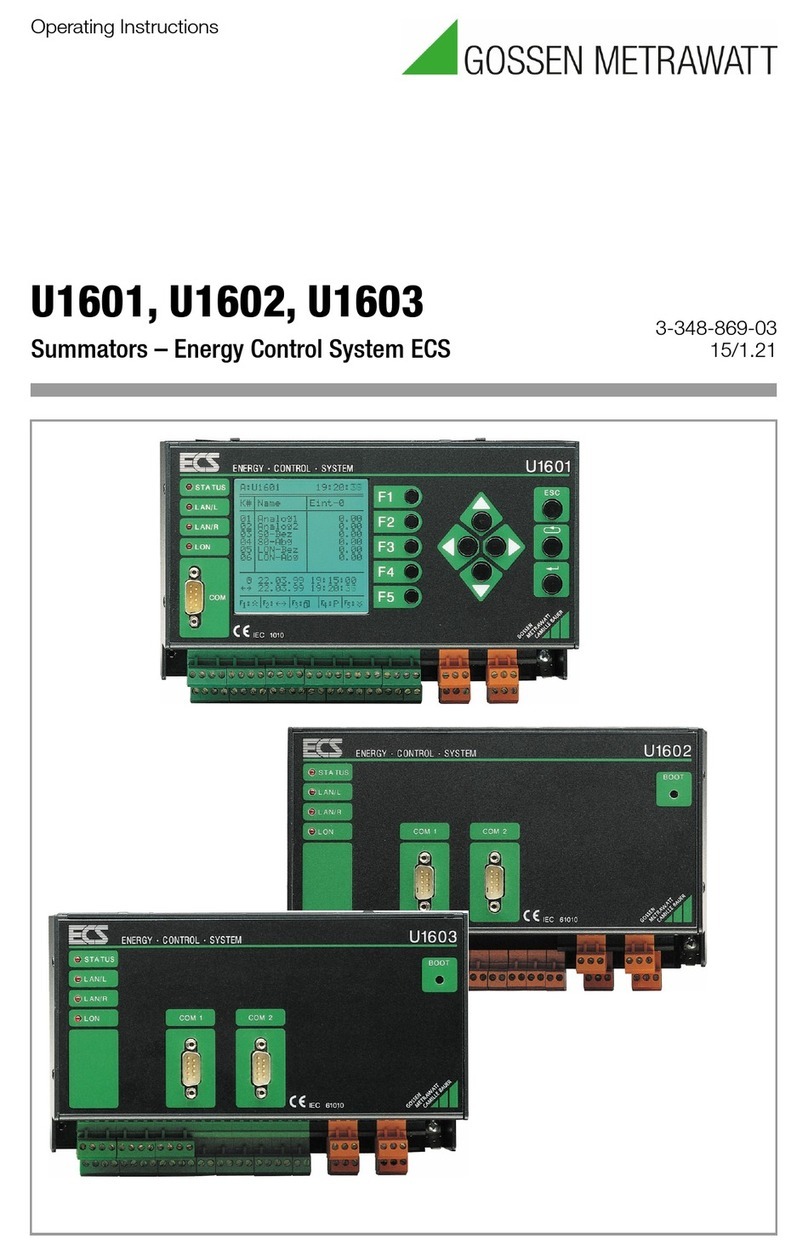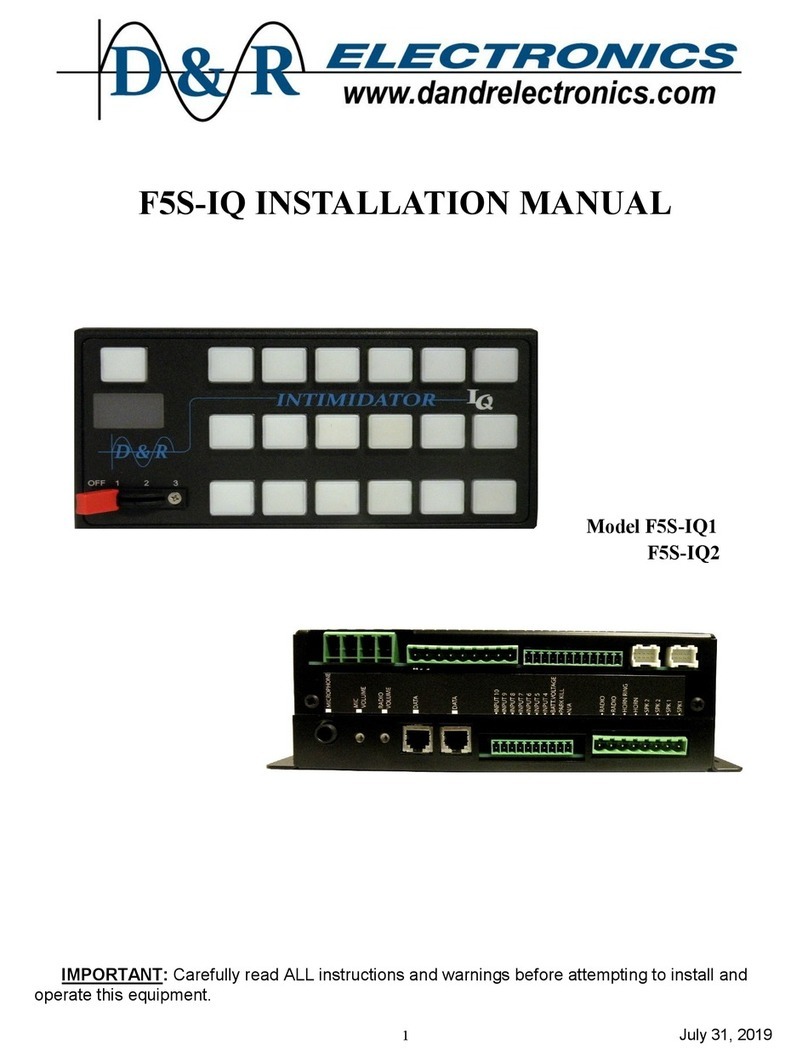Arlacon MC300 User manual

ARLACON MC300 MC300MAE
Control system
User's manual 1
Product code 1003418
ARLACON MC300
Control system
user's manual
COMPACT SYSTEM
•up to 8 axes
•graphigal display
•ASCII keyboard
•McDos / McBasic
•RS232, RS232/422/485
•McWay 504/504 i/o each, 1,25ms
Arlacon Motion Controls
Control Techniques SKS Oy
Martinkyläntie 50 01720 VANTAA
tel +358-9-852 678 fax +358-9-852 6740
1.4.1997, Ari Lindvall

ARLACON MC300 MC300MAE
Control system
User's manual 2
Product code 1003418
DECLARATION OF CONFORMITY
Manufacturer: Control Techniques SKS Oy
Address: Control Techniques SKS Oy
Martinkyläntie 50
SF-01720 Vantaa
Finland
Product: MC300 control units
conform to the following Directives and Regulations
EMC: Directive 89/336/EEC
Generic Standards: EN 50081-2
EN 50082-2
The purpose of this equipment is to be used as a part of the electrical system of
an industrial machine. It is therefore essential that the installation and use of the
product are executed according to manufacturer's instructions and specification.
When installed as described in manufacturer's documentation, the equipment
conforms to the requirements of the described standards. However, the final
responsibility for the conformance of the complete installation and machinery
where the equipment is being used is left with the manufacturer of such apparatus.
In certain cases it is necessary to perform additional tests to confirm the EMC
performance of the complete system.
Vantaa 14.3.97 Control Techniques SKS Oy
A. Lindvall

ARLACON MC300 MC300MAE
Control system
User's manual 3
Product code 1003418
Table of contents:
1. INTRODUCTION_______________________________________________________________4
1.1 GENERAL......................................................................................................................................4
1.2 MC300 FLUSH MOUNT CONTROL UNIT......................................................................................4
1.3 MC300 CONTROL UNIT WITH ENCLOSURE ...............................................................................5
1.4 MCWAY I/O SYSTEM....................................................................................................................5
1.5 MCBASIC PROGRAMMING LANGUAGE......................................................................................5
2. INSTALLATION AND ASSEMBLY _________________________________________________6
2.1 MC300 FLUSH MOUNT INSTALLATION .......................................................................................6
2.2 MC300 with enclosure ....................................................................................................................8
2.3 CONTROL UNIT ELECTRICAL CONNECTIONS...........................................................................9
2.3.1 Power Supply ..................................................................................................................11
2.3.2 Communications setup ....................................................................................................11
2.3.3 Communications connections..........................................................................................13
2.3.4 WGT02310 Optical fibre/ RS232 /RS422 general transceiver..........................................15
2.4 MCWAY I/O MODULES...............................................................................................................18
2.5 CONNECTING TO A TERMINAL OR PC.....................................................................................18
2.6 EMC considerations......................................................................................................................18
2.6.1 The European EMC directive...........................................................................................19
2.6.2 General installation guidelines.........................................................................................19
2.6.3 System grounding............................................................................................................19
2.6.4 Enclosure ........................................................................................................................21
2.6.5 Power supply...................................................................................................................21
2.6.6 MC300 flush mount connections,.....................................................................................22
2.6.7 MC300 with enclosure, connections.................................................................................23
2.6.8 Signal cables...................................................................................................................23
3. POWER UP AND TESTING______________________________________________________25
3.1 SWITCHING ON POWER............................................................................................................25
3.2 INITIALIZING THE SYSTEM........................................................................................................26
3.2.1 McWay configuration.......................................................................................................26
3.3 STARTING THE SERVO SYSTEM ..............................................................................................28
4. PROGRAMMING THE MC300__________________________________________________31
4.1 SYSTEM SPECIFIC MCBASIC FEATURES.................................................................................31
4.2 DISPLAY AND KEYBOARD.........................................................................................................31
4.3 I/O USAGE...................................................................................................................................33
4.4 EDITING IN A PC.........................................................................................................................33
4.5 USING PROCOMM......................................................................................................................33
4.6 MEMORY.....................................................................................................................................35
4.6.1 Flash memory and program backups...............................................................................35
4.6.2 Memory settings..............................................................................................................35
4.6.3 RAM memory ..................................................................................................................36
4.6.4 Real-time clock and calendar...........................................................................................36
4.6.5 Emergency stop switch....................................................................................................36

ARLACON MC300 MC300MAE
Control system
User's manual 4
Product code 1003418
1. INTRODUCTION
Welcome to use the ARLACON MC family of control products. Like other ARLACON control
systems the MC300 combines simple and compact system structure with powerful system
software and programming tools.
The MC300 features continuous path servo control for up to 8 axes, expandable i/o
connections and RS-232/422 communications. Additionally, MC300 combines a user terminal
with an lcd graphics/text display and a function keypad in the same control unit.
This manual contains information on installing and using the MC300 control system. Please
study the following chapters carefully before starting to work with your system. Also refer to the
ARLACON McWay I/O system user’s manual and the McBasic programming environment
reference manual where applicable.
In case you have questions or suggestions concerning this manual, the MC300 or other
ARLACON products, please contact your ARLACON dealer or the manufacturer:
ARLACON Motion Control
Control Techniques SKS Oy
Martinkyläntie 50
SF-01720 VANTAA
FINLAND
phone int+ 358-0-852 678
telefax int+ 358-0-852 6740
1.1 GENERAL
The MC300 control unit combines a programmable control computer with a 320x240 pixel
backlit graphical/text lcd display and a 24key function keypad with programmable led indicator
lamps.
The MC300 is equipped with two serial interfaces that can be used for communications or
networking, a connection for standard ASCII keyboard and a McWay connection for the i/o
system.
To get the MC300 operating you only need a 24Vdc power supply and a terminal or a PC for
programming.
The MC300 can also be configured as a "Dumb terminal" for use as user interface terminals
for ARLACON control systems or other systems using RS-232, RS-422 or optical fibre
communications.
1.2 MC300 FLUSH MOUNT CONTROL UNIT
The MC300 flush mount version is designed for mounting on cabinet doors and instrument
desks where it provides flexible user interface capabilities for all types of application.
It is available with either RS232 and optical fibre connections or RS232/RS422 connections.

ARLACON MC300 MC300MAE
Control system
User's manual 5
Product code 1003418
1.3 MC300 CONTROL UNIT WITH ENCLOSURE
The MC300 version with aluminium enclosure is a fully enclosed version for bracket mounting
on machine chassis or for use as a hand terminal. It is equpped with RS232/RS422
connections. An adapter module is available for using optical fibre connection.
1.4 MCWAY I/O SYSTEM
McWay i/o system is connected to the MC300 McWay connection to operate as a fast ring
topology serial network with down to 0,5 ms refresh rate.
McWay i/o modules use standard rail mounting and terminal blocks to provide easy panel
assembly.
MC300 is available with either RS-422 or optical fibre McWay and serial interface version. The
RS-422 signal enables use with twisted pair cables whereas the optical fibre provides optimum
EMC performance and fast communications for up to 50m distances. RS-232 is provided for
short distance communication with a PC or other data equipment.
The MC300 hand terminal version with enclosure is equipped with RS-422/232 signals. Optical
fibre communications can be obtained using the WGT02310 transceiver module with it.
The 1,25ms refresh rate means that input information for the control unit and data on the
output modules are never more than 1,25ms old. Thus, it is possible to perform closed loop
servo control with the remote servo axis connection modules.
More details of the operation of McWay modules can be found in the ARLACON McWay i/o
system user's manual.
1.5 MCBASIC PROGRAMMING LANGUAGE
The McBasic is a programming environment developed for use with ARLACON control
systems. It combines the ease of the standard Basic programming language and interpreter
type interactive programming and testing with a fast runtime compiler, multitasking capabilities
and powerful logic and motion control commands.
The McBasic version in MC300 runs under McDOS operating system allowing use of McDOS
file and communication systems and utility programs. By using a WAKEUP.EX start-up batch
file the system can be set to directly start at system power-up and automatically run the
application program if loaded in memory or from some of the available memory devices.
MC300 supports 16 logical axes of which up to 8 can be physical axes controlled by the
system simultaneously. Up to 504 input bits and 504 output bits can be connected via the
McWay I/O system.
With its full floating point mathematics, strings, arrays, functions and structures, McBasic gives
you tools for effective programming of work cycles, interactive user interfaces,
communications and data processing. Up to 32 simultaneous tasks can run in MC300. Tasks
can also be created and killed at any time by the application program.
The McBasic programming language is described in detail in the ARLACON McBasic
programming environment reference manual.

ARLACON MC300 MC300MAE
Control system
User's manual 6
Product code 1003418
2. INSTALLATION AND ASSEMBLY
This chapter describes the different versions of MC300 and the procedures for installing them
in your system.
!For any work on the connections or inside parts of the unit, the power supply must be
disconnected. Any such action on a unit with power on may cause damage to the unit or
equipment connected to it.
2.1 MC300 FLUSH MOUNT INSTALLATION
The MC300 flush mount version is designed for mounting on doors, consoles etc. For
installation, cut a mounting hole according to fig. 2.1.1. Also drill holes for the 4 screws
required for fastening the unit.

ARLACON MC300 MC300MAE
Control system
User's manual 7
Product code 1003418
GRAPHICAL LCD DISPLAY 320x240 pixels JOYSTICK,
OPTIONAL ACCESSORY
EMERGENCY
STOP SWITCH,
OPTIONAL ACCESSORY
MADE IN FINLAND
U5
FLASH
EPROM
U4
EPROM
U1
RAM
U2
EPROM
1 +24V
2 0V
S1
POWER
SUPPLY
1
2
3
4
5
6
in
out
0V
in
out
0V
:CN
:LP
DPI-S1
RS-232 serial interfaces
S4
RS-422
:LP
(McWay)
S3
RS-422
:CN
(Host)
U4 :CN
fiber in
U5 :CN
fiber out
U6 :LP
fiber in
U7 :LP
fiber out
MODEL
SERIAL
SUPPLY 24Vdc / max.1A
Manufactured by ARLACON Motion Controls
Control Techniques SKS Oy, Finland
RS-422 / optical fibre
in :CN
in
out
in :LP
in
out
Comm. indicators
inA
inB
0V
outA
outB
inA
inB
0V
outA
outB
1
2
3
4
5
1
2
3
4
5
MC300 CONTROL UNIT
U3
RAM
193
376
MOUNTING HOLE 320 x 160
57
360
40
EMERGENCY STOP
Fig 2.1.1 MC300 flush mount version
When installing the unit, insert it through the mounting hole from the front side and fasten with
screws. Use M6 screws for mounting. When mounting through metal surfaces like a control
system cubicle or control panel, be sure to clean the surfaces and use the washers supplied to
ensure good electrical connection through each screw for specified electromagnetic
compatibility.
The display/keyboard plastic membrane of the MC300 has transparent windows over the
keyswitches to enable use of custom legends on the switches. A white plastic background with
holes for the led lamps is also supplied for use with legends printed on transparent plastic.
Optionally, the MC300 can be delivered with a customer specific front plate.
To change the keyboard legends, first remove the 6 screws holding the plastic front plate.
Then lift off the front plate to access the keypad cavity behind the plastic membrane.

ARLACON MC300 MC300MAE
Control system
User's manual 8
Product code 1003418
Customer specific legends can be printed out for example with a laser printer and a suitable
drawing program. Such printouts can also be ordered from the manufacturer. Fig. 2.1.2 shows
the dimensions and layout of a keypad legend slip.
68
98
15
15
7 8 9
4 5 6
1 2 3
0ENTER
FGHE
JKLI
A
B
C
D
789
456
123
0ENTER
F1
F2
F3
F4
F5
F6
Fig 2.1.2, Keypad legend slip
2.2 MC300 with enclosure
The MC300HTR with aluminium enclosure is designed for use as a hand terminal or for
mounting on machines, walls etc. A support bracket with hand screws is also available. The
enclosure is also equipped with two D-15 and a 5 pin DIN female connectors for electrical
connections.

ARLACON MC300 MC300MAE
Control system
User's manual 9
Product code 1003418
McWay/
:LP :CN
318 53
GRAPHICAL LCD DISPLAY 320x240 pixels
JOYSTICK,
OPTIONAL ACCESSORY
30
133
26M5
EMERGENCY
STOP SWITCH,
OPTIONAL ACCESSORY
CONSOLE
McWAY I/O and
AUXILIARY
SERIAL INTERFACES RS232/RS422
40
225
63
53
Ø8
Ø8 Ø8
MADE IN FINLAND
EMERGENCY STOP
Fig. 2.2.2 MC300HTR with enclosure.
To access the system board inside the enclosure, you can either open the back cover of the
enclosure or remove the unit from the enclosure with its front plate.
To open the back cover, first remove the four screws on the sides of the cover. If necessary,
also loosen the four screws on one of the end plates of the enclosure.
It is also possible to access the system board from the front side. To remove the front plate,
first remove the 6 screws holding the plastic front cover. Remove the cover and remove the 6
screws on the sides of the front plate. You can now lift the metal front plate of the system with
electricall parts attached. Disconnecting the communication flat cable, power cable and
keyboard cable connectors allows removing the unit for service.
2.3 CONTROL UNIT ELECTRICAL CONNECTIONS
Fig. 2.3.1 shows the MC300 control unit system board. Additionally, a daughter board
DPI02410 is used in panel/flush mount versions for connections. In the MC300 with enclosure
the connections go through D-15 connectors via a connector card at the end plate of the
enclosure. These boards both connect to the S2 connector on the system board (MCU1).

ARLACON MC300 MC300MAE
Control system
User's manual 10
Product code 1003418
+24V
0V
Fig. 2.3.1, MC300 system board
The following significant parts are located on the system board:
MC300
S1 Power supply connector (20-28Vdc)
S2 Communications connector
S3 Analog I/O connector
S4 CPU service connector
S5 Memory type jumpers
S6 ASCII keyboard connector
S7 Function keypad connector
S8 LCD display connector
S9 EL display connector
S10 option connector
S11 2. LCD display connector
B1 Memory backup battery for CMOS RAM
U1 RAM 128k standard, 512k optional (odd bytes)
U2 System EPROM D8: (odd bytes)
U3 RAM 128k standard, 512k optional (even bytes)
U4 System EPROM D8: (even bytes)
U5 FLASH EPROM D6: , 256k standard, 512k optional
U6 Video RAM
U7 CPU
U10 McWay control logic
U11 I/O control logic
U12-14 Display control logic
U15 RS-232 buffers
U16 CN: RS-422/485 output buffer
U17 CN: RS-422 /485 input buffer
U18 LP:/McWay RS-422/485 output buffer
U19 LP:/McWay RS-422/485 input buffer

ARLACON MC300 MC300MAE
Control system
User's manual 11
Product code 1003418
U20 Power supply
U21 A/D converter (optional)
U22 D/A converter (optional)
U23 Realtime clock
R26 Contrast adjusting potentiometer
2.3.1 Power Supply
The power supply requirement for the MC300 is 24Vdc nominal (min. 16Vdc, max. 30Vdc)
0,7A typical 1A max. at 24V. An unregulated filtered dc power supply can be used. Note, that
the use of a power supply equivalent to the types supplied by your ARLACON distributor for
use with MC300 is necessary to ensure EMC conforming to EC directives.
When building complete systems with MC300 and McWay i/o modules note the system overall
power requirement when using the same power supply.
In the MC300 flush version the power supply is connected to the S1 connector on the system
board.
S1
pin
1+24V
20V
In the MC300 enclosed version the power supply is connected on either of the D-15
connectors. The same cable, which is used for communications, can also be used for power
supply.
:CN/:LP
pin
14 +24V
60V
2.3.2 Communications setup
There are two communications channels available on the MC300 unit. Both channels have
signal connections for RS232 and RS422/RS485 type physical signals. The channels can be
run at any standard baud rate between 300 -38400 bit/s.
The system uses XON/XOFF handshake. No hardware handshake signals are available.
The default communications parameters for both channels are:
transfer rate 9600 bit/s
data 8 bit
parity no
stop 1 bit
handshake XON/XOFF
The communications parameters can be set as described in the McBasic and McDos manuals
using the SET command or in connection with commands such as PAATE (McDos) or OPEN
(McBasic).
Although the MC300 communication can be configured to generate parity, incoming parity
errors are ignored.

ARLACON MC300 MC300MAE
Control system
User's manual 12
Product code 1003418
Console (:CN)
The :CN port is the default programming port or the console port of the MC300.
When connecting a terminal device such as a CRT terminal, a PC with a terminal program or
an ARLACON program development system, the programmer can directly access the MC300
McDos operating system and the McBasic programming environment.
Alternately, using the McDos CNTO command, another port can be assigned to be the console
port. This way for example
CNTO TR:
Redirects console operation to MC300 lcd display and keyboard. This command can be written
in the WAKEUP.EX file run by McDos at power-up or used from an McBasic program with the
McBasic SYSTEM() command. For example:
SYSTEM(“CNTO TR:”)
will redirect the console including ctrl-X operation to stop the program.
SYSTEM(“CNTO CN:”)
can be used to set console back to CN: port.
The console port can be used to edit programs, issue commands, upload and download
programs and test the system.
When running an application program the CN: port or any port assigned to be the console, can
also be used for any other communications purpose. However, the current console port always
reacts to ctrl-X by stopping the McBasic program being run. Redirecting console can be used
to avoid this when running protocols written to use also ctrl-X.
The MC300 can also connect to McNet RS485 local network via the CN: or LP: channel as a
network peripheral device (see McNet documentation).
When starting the MC300, all logical devices (#nn, see McBasic user's manual) refer to the
console port channel (default CN:).
Auxiliary communications channel (LP:)
The LP: port can be use for any communications purpose in the application. Initially, there are
both RS-232 and RS-422/485 signals available for use with it. When connecting a McWay I/O
system to the MC300, the RS-422/485 signals for LP: are automatically connected to the
McWay I/O controller in the MC300. The RS-232 signals remain connected to the LP: port to
allow simultaneous use with McWay I/O. If it is necessary to have other signal types for LP:
while running McWay I/O, an optional WGT02310 module can be connected to convert to
either RS-422 or optical fibre signals.
The :LP channel can be used for connecting devices such as a serial printer, other computer,
barcode wand etc.
LP: McWay master signals
To use the MC300 with McWay i/o, the control unit must first be configured to use the number
0 McWay channel with the McBasic WAYMOD$ command. This will automatically connect the
LP: port RS-422 signals or optical fibre signals to the MC300 internal McWay controller leaving

ARLACON MC300 MC300MAE
Control system
User's manual 13
Product code 1003418
the RS-232 signals for use with LP: serial port. See McBasic manual and McWay I/O system
manual for details on McWay configuration.
2.3.3 Communications connections
MC300 with DPI02410 connection board
The MC300 flush mount version is equipped with the DPI02410 connection board as standard.
Two versions of this board are available, version A with connections for RS232/422 and
version B with connections for RS232 / optical fibre. Use of optical fibre is recommended for
McWay I/O system to ensure optimum EMC performance. The pinouts and connections on the
connections board are shown on the cover of the unit and in Fig and Fig. 2.2.1.
The DPI02410 connection board also provides led indicator lamps for monitoring
communications signals. These lamps can be seen through holes in the cover of the unit.
in :CN
in
out
in :LP
in
out
Comm. indicators Console port (:CN) signals
2.nd port (:LP) signals
Fig. 2.3.3.1, DPI02410 indicator led lamps
MC300 with enclosure
The MC300 version with enclosure has communications connectors on the enclosure with the
following pinouts:
pin
1Chassis ground
2RS232 data in
3RS232 data out
4RS422 IN A
5RS422 OUT A
6Power supply 0V
7Signal gnd
8EMRG +
9TTL-level CTS* in
10 TTL-level Tx enable out
11 RS422 IN B
12 RS422 OUT B
13 +5V
14 Power supply +24V
15 EMRG -
EMRG signals are used with the optional emergency stop switch. The emergency switch
contacts are available on the EMRG+ and EMRG- pins at the CN: connector.

ARLACON MC300 MC300MAE
Control system
User's manual 14
Product code 1003418
Further stop switches can be connected in series with the emergency switch by removing the
right jumper S5 on the ADP02908 connector board in the MC300 enclosure. After removing
the left jumper on S5, the emergency loop is open at CN: connector S3 +EMRG and -EMRG
pins. Removing the right jumper opens the emergency loop at the LP: connector S4
respectively.
S3
EMRG
bypass
S4
EMRG
bypass
Fig. 2.3.3.2 MC200HTR with enclosure, communications connector board
A +5V voltages is available on the connector for use with equipment such as bar code wands
and should not be loaded more than 100mA.
Fig. 2.3.3 shows an example where :CN is connected to a PC via RS232 interface and :LP is
connected as a McWay i/o loop with one i/o module. The McWay connection is shown in the
two versions: RS-422 (A) or optical fibre (B). Use of optical fibre is recommended for optimum
EMC performance.

ARLACON MC300 MC300MAE
Control system
User's manual 15
Product code 1003418
RS232 out
RS232in
signal gnd
MC300
CONTROL UNIT
DPI-S1
McWAY I/O MODULE
S1
15
14
11
12
13
INA
INB
OUTA
OUTB
PC SERIAL INTERFACE
RxD
TxD
SIGNAL GND
2 mm
6 mm
2 mm
2 mm
CTS
DSR
DTR
D25 D9
3
2
7
5
6
20
2
3
5
8
6
4
1 in
2 out
3 0V
4 in
5 out
6 0V
1 inA
2 inB
3 0V
4 outA
5 outB
S4 RS-422 :LP (McWay)
1 +24
2 0V
FROM
POWER
SUPPLY
RS-422 version (A)
fiber in
fiber out
fiber in
fiber out
Optical fibre version (B)
McWAY I/O MODULE
MC300 :LP McWay
U6
U7
S1
POWER
SUPPLY
Fig. 2.3.3.3, Example of MC300 communications connections
2.3.4 WGT02310 Optical fibre/ RS232 /RS422 general transceiver
The WGT02310 transceiver module is a DIN rail mounting conversion module for use with
optical fibre compatible with McWay equipment. It can be used for several purposes:
-To connect McWay modules to MC300 systems with optical fibre
-To connect McWay modules to MC300 systems with RS-422 with optical isolation in
each segment.
-To provide isolation/optical fibre connection for MC300 serial communications
-To convert RS-232 signals to RS-422 or optical fibre
The WGT02310 has three input/output interfaces freely connectable to each other using
onboard jumper blocks:
-1 mm plastic optical fibre transmitter and receiver
-RS-232 /RS-422 with D-15 female connector compatible with MC300 with enclosure
-RS-422 with terminal block and optically isolated input
The D-15 connector has a separate 2 pin terminal block for EMRG signal connection.

ARLACON MC300 MC300MAE
Control system
User's manual 16
Product code 1003418
Fig. 2.3.4.1 shows the parts of a WGT02310 module
FIBER IN
FIBER OUT
S1 RS-422
IN A
IN B
GND
OUT A
OUT B
21
22
11
12
13
14
15
51
52
+24Vdc
0V
S2 POWER
SUPPLY
EMRG+
EMRG-
S5 emergency
switch for S3
S3 RS-422
or RS-232 in/out
Fig. 2.3.4.1, WGT02310 general transceiver module.
FIBER IN (U1) Optical fibre input
FIBER OUT (U2) Optical fibre output
S1 RS-422 terminal block connector
S2 Power supply input connector
S3 RS232/RS422 D-15 connector
S5 EMRG connector for S3 EMRG signals
S9 FIBER OUT source selector jumper block
S10 RS-422 (S1) output source selector jumper block
S11 RS-232/RS-422 (S3) output source selector jumper block
S12 5V voltage source selector jumper
D1 Fibre input off indicator led
D2 Fibre input on indicator led
D3 Fibre output on indicator led
D4 RS-422 (S1) input off indicator led
D5 RS-422 (S1) input on indicator led
D6 RS-422 (S1) output on indicator led
D7 RS-232/RS-422 (S3) input off indicator led
D8 RS-232/RS-422 (S3) input on indicator led
D9 RS-232/RS-422 (S3/S4) output on indicator led
F1 24V power input fuse (1A)

ARLACON MC300 MC300MAE
Control system
User's manual 17
Product code 1003418
Using jumper block S9-S11 it is possible to select any of the three input sources to connect to
each output. Fig. 2.3.4.2 illustrates the interconnection possibilities.
FIBER IN
FIBER OUT
S1 RS-422
IN A
IN B
GND
OUT A
OUT B
21
22
11
12
13
14
15
51
52
+24Vdc
0V
S2 POWER SUPPLY
S5 emergency
switch for S3
EMRG+
EMRG-
S10
S9
S11
S1
S2
Connection of selector
blocks S9 - S11
Fiber input
S3 RS-232/
RS-422 input
S1 RS-422
input
Fig. 2.3.4.2, WGT02310 interface interconnection with jumper blocks
Using led indicator lamps D1-D9 it is possible to monitor all inputs and outputs. Jumper S12
can be installed to supply the WGT02301 module from MC300 control unit via S3.
Do not install jumper S12 if you use 24V connected to S2.
The following table shows the pinout of the communications interface connector in
WGT02310. It is compatible with similar communications in other ARLACON equipment.
To connect via the D-15 connector use a suitable cable with either RS-422 or RS-232 signals
connected from "in" to "out". Other signals are connected pin-to-pin. Signals "frame gnd" are
provided for connection of cable screens and are preconnected to supply 0V in WGT02310.
If used with MC300 version with enclosure, pins 6 and 14 can be used for connecting power
from WGT 24V supply to terminal. In this case, do not connect pins 9,10 and 13.
WGT02310 S3 D-15 communications connector
pinout
PIN signal PIN signal
1
2
3
4
5
6
7
8
frame ground
RS-232 in
RS-232 out
RS-422 IN A
RS-422 OUT A
0V (supply)
signal ground
EMRG+
9
10
11
12
13
14
15
(+12V)
(-12V)
RS-422 IN B
RS-422 OUT B
+5V
+24V (supply)
EMRG-
To supply power from MC300, connect S12 on WGT02310 board. Do not connect 24V supply
to WGT02310.

ARLACON MC300 MC300MAE
Control system
User's manual 18
Product code 1003418
2.4 MCWAY I/O MODULES
McWay i/o modules provide a method for building complete control systems using the
ARLACON MC300 series control unit. Modules are available for connecting position feedback
controlled axes with either incremental or absolute encoders, digital and analog inputs and
outputs. Up to 504 output bits and 504 input bits can be connected to the MC300 McWay loop
with a refresh period of down to 1ms.
Since the refresh rate of the McWay I/O loop coincides with the McBasic PIDFREQ setting,
value >1000 will limit the number of input and output bits available. With PIDFREQ=2000 the
refresh period is 0,5ms and the max. number of input and output bits is 240.
To use McWay modules with MC300 each module must be selected to operate at 1,25Mbaud.
Further instructions about different McWay modules are available in the ARLACON McWay
I/O system user’s manual.
2.5 CONNECTING TO A TERMINAL OR PC
To program the MC300 it is necessary to connect a display terminal, a PC or ARLACON
program development system to the :CN serial communications channel of the control unit.
To communicate, the MC300 only needs three wires connected:
signal MC300 MC300 w. ARLACON PC PC
at MC300 DPI-S1 encl. D-15 D-25 D-25 D-9
female male male
pin pin pin pin pin signal
RS232 in (RxD) 1 2 3 2 3 TxD
RS232 out (TxD) 2 3 2 3 2 RxD
signal ground 3 7 7 7 5 gnd
chassis ground chassis 1shield
For interference protection use shielded cable and connect shield to system ground (chassis)
at MC300. Some PC computer programs also require pins 5,6 and 20 (D-25) or 8,6 and 4 (D-9)
to be connected to each other to bypass hardware handshake.
For communications, please use a terminal program with xon/xoff handshake such as
PROCOMM, PCPLUS, WINDOWS TERMINAL etc. Set the communication to 9600 baud, 8
bit, no parity, xon/xoff handshake.
With display terminals with connector pinouts different from above, please connect according
to RS232 signal names.
2.6 EMC considerations
Electromagnetic compatibility (EMC) is an important design factor in industrial automation as
well as in other electrical installations. The purpose of EMC is to ensure that electrical
equipment emit electromagnetic energy (interference) less than can cause malfunction of
other equipment. The difference between the level of emissions and the level of susceptibility
is called the EMC margin.
There are different standards and regulations specifying the test and measuring techniques
and acceptable levels for conducted and radiated emissions and immunity.

ARLACON MC300 MC300MAE
Control system
User's manual 19
Product code 1003418
2.6.1 The European EMC directive
The European Union requirements for EMC are stated in the EMC directive 89/336/EEC. The
purpose of this directive is to ensure that all “Relevant Apparatus” marketed in the European
Union have the same EMC margin in the same type of environment. Relevant apparatus is
defined as a product or installation having an independent function and being delivered to the
end user as such in the European Union. Such apparatus must also be marked with the CE
mark to show the end user that the product complies with relevant parts of the regulations.
The Machine Directive containing regulations of machine safety and structure, demands that
the machine complies with the requirements of the EMC directive. This means that emissions
from the machine (conducted and radiated) must be under the levels stated in the appropriate
basic standards and the immunity of the machine for interference must be on the levels stated
in these standards. These basic standards are:
EN50081-1 emissions, domestic and light industry
EN50081-2 emissions, industrial
EN50082-1 immunity, domestic and light industry
EN50082-2 immunity, industrial
It is not necessary to maintain the same levels inside the application. Therefore the regulations
do not apply to components and materials used in the machines as such. Also, the amount of
emitted interference increases as the number of components increases. This increase varies
according to the nature of the source.
While it is always necessary to maintain a suitable EMC margin inside the electrical system of
a machine to ensure the proper operation of the machine, the cost effective way to build an
EMC directive compliant machine is to design for the external connections and protection of
the machine to comply with the necessary requirements.
Typical methods to achive this are common filtering of power signals, appropriate housing
structure for components and equipment and use of suitable screening and cable types
together with correct grounding in the wiring of the system.
2.6.2 General installation guidelines
To help the machine manufacturer achieve compliance, ARLACON MC products have been
measured in test installation to pass the requirements of EN50081-2 and EN50082-2.
These installations are described in ARLACON MC manuals. By following these installation
practices the ARLACON components in the electrical system of the machine generally do not
obstruct compliance. In complex cases, where it is difficult to install according to all
instructions, and when the influence of other components must be considered, additional
testing may be necessary to ensure compliance.
2.6.3 System grounding
The applicable regulations for protective earth of the system should be obeyed to ensure
electrical safety.
Earth conductors used should be as short and large as possible and the must be able to carry
the maximum short circuit current in a fault situation.
The control system, other electrical equipment and the machine must be interconnected to a
common earth reference, the machine chassis earth.

ARLACON MC300 MC300MAE
Control system
User's manual 20
Product code 1003418
Whenever possible, earth from control components and signal wiring shields should be
connected to a separate earth called technical earth (TE), which is connected to the protective
earth (PE) as near the factory earth potential as possible.
Shields and earth wiring conducting emitted interference to earth, such as motor power cable
shields and motor/drive earth should be connected to PE.
To ensure, that all earths are as free of interference as possible, all earth wiring must be
connected in a tree fashion with branches routed to the central earth ground point (see. fig.
2.6.3.1 and fig. 2.6.3.2).
Programming
equipment
Control system
cabinet with
ARLACON MC
and other equipment
Other control equipment
such as drives
and distributed I/O
Machine with
motors, sensors and
actuators
common
ground point
earth at building
ground potential
NOTE
Signal and power
connections
not shown
MC300
24V
power
supply
Fig. 2.6.3.1, System ground tree arrangement
Table of contents
